Key achievements
Quantum gravity (QG) is a field of theoretical physics that seeks to describe gravity according to the principles of quantum mechanics, and where quantum effects cannot be ignored, such as near compact astrophysical objects where the effects of gravity are strong. The current understanding of gravity is based on Albert Einstein's general theory of relativity, which is formulated within the framework of classical physics. On the other hand, the other three fundamental forces of physics are described within the framework of quantum mechanics and quantum field theory, radically different formalisms for describing physical phenomena. It is sometimes argued that a quantum mechanical description of gravity is necessary on the grounds that one cannot consistently couple a classical system to a quantum one.:11–12 While a quantum theory of gravity may be needed to reconcile general relativity with the principles of quantum mechanics, difficulties arise when applying the usual prescriptions of quantum field theory to the force of gravity via graviton bosons. The problem is that the theory one gets in this way is not renormalizable (it predicts infinite values for some observable properties such as the mass of particles) and therefore cannot be used to make meaningful physical predictions. As a result, theorists have taken up more radical approaches to the problem of quantum gravity, the most popular approaches being string theory and loop quantum gravity. Although some quantum gravity theories, such as string theory, try to unify gravity with the other fundamental forces, others, such as loop quantum gravity, make no such attempt; instead, they make an effort to quantize the gravitational field while it is kept separate from the other forces.
Page 2 of 2

 English (United Kingdom)
English (United Kingdom)  Czech (Čeština)
Czech (Čeština) 